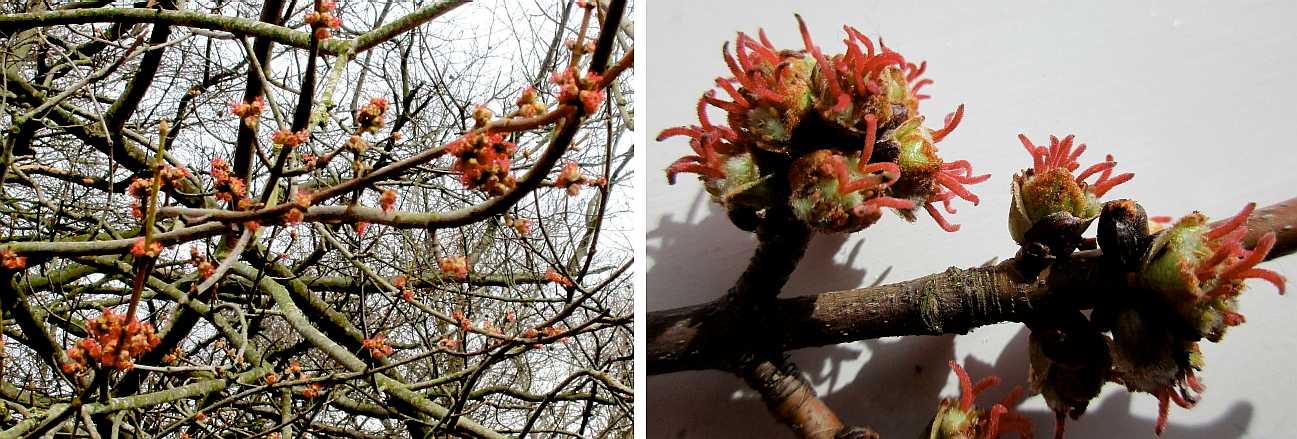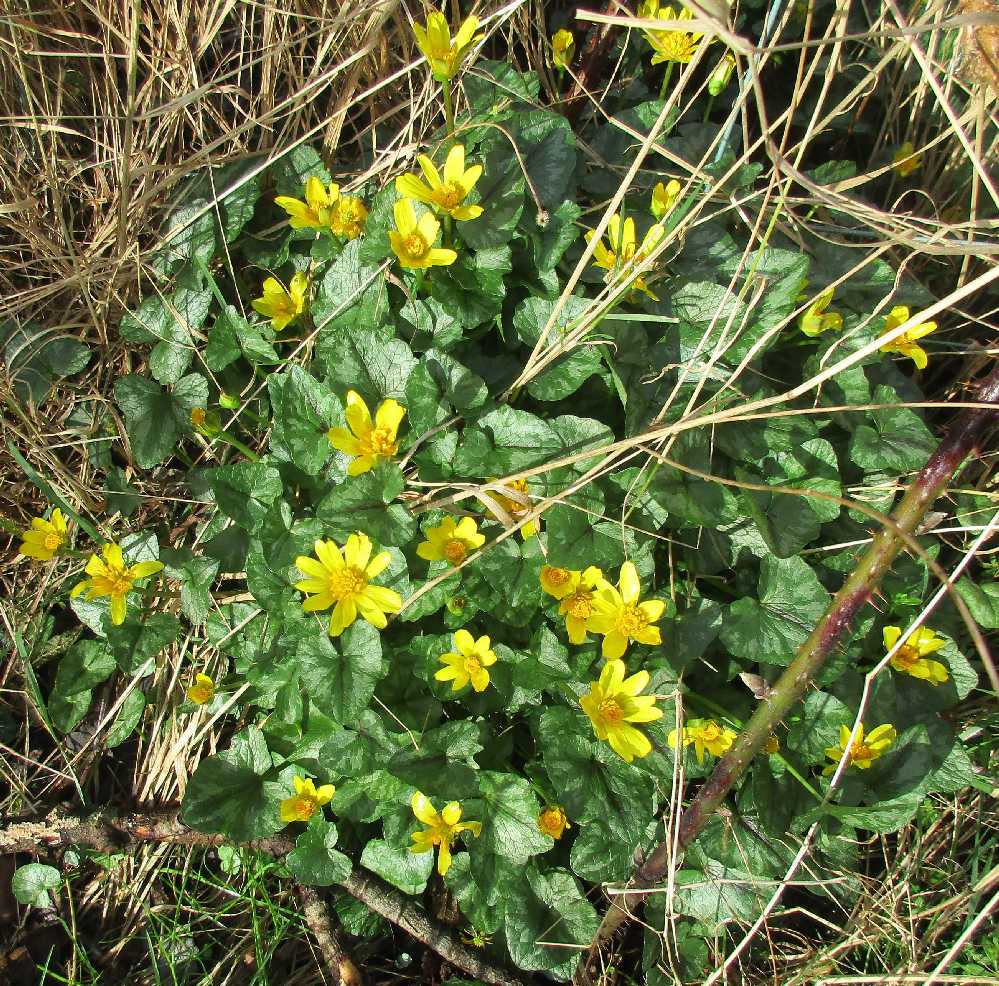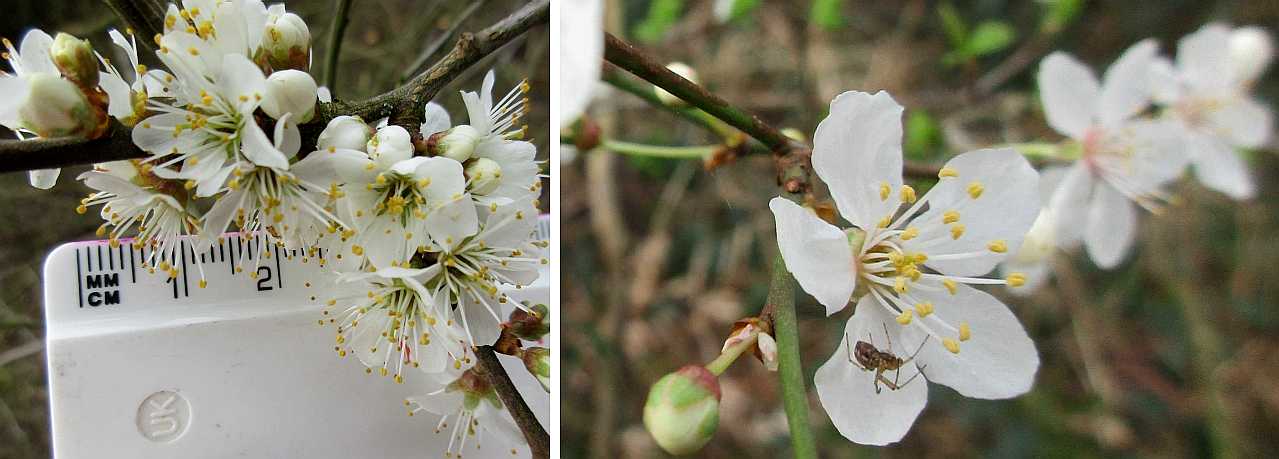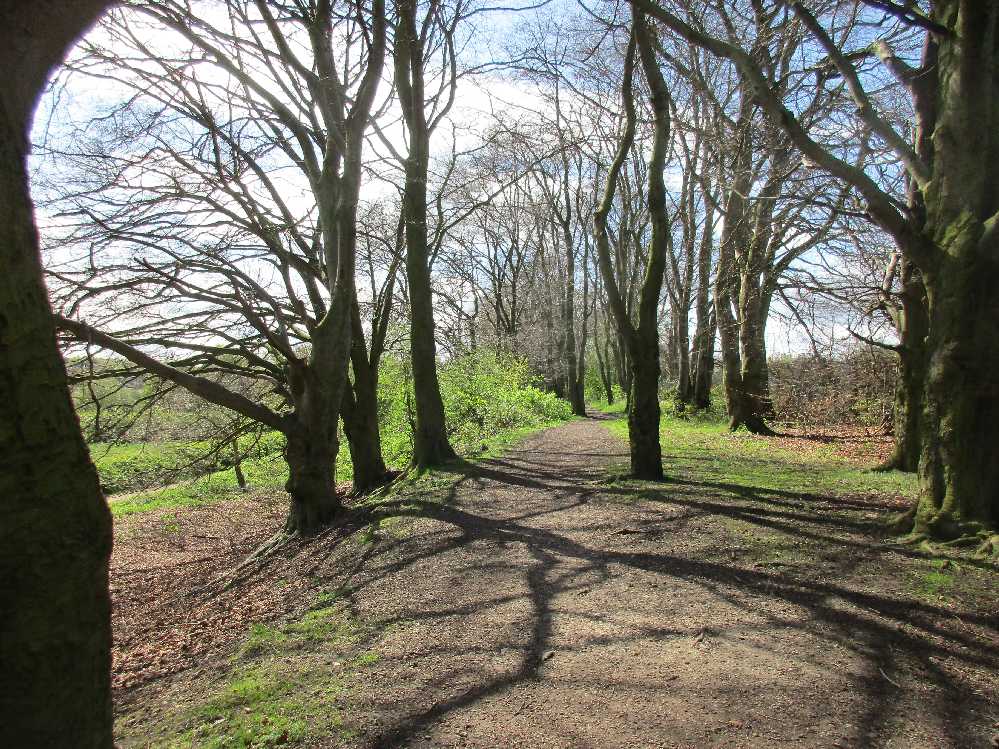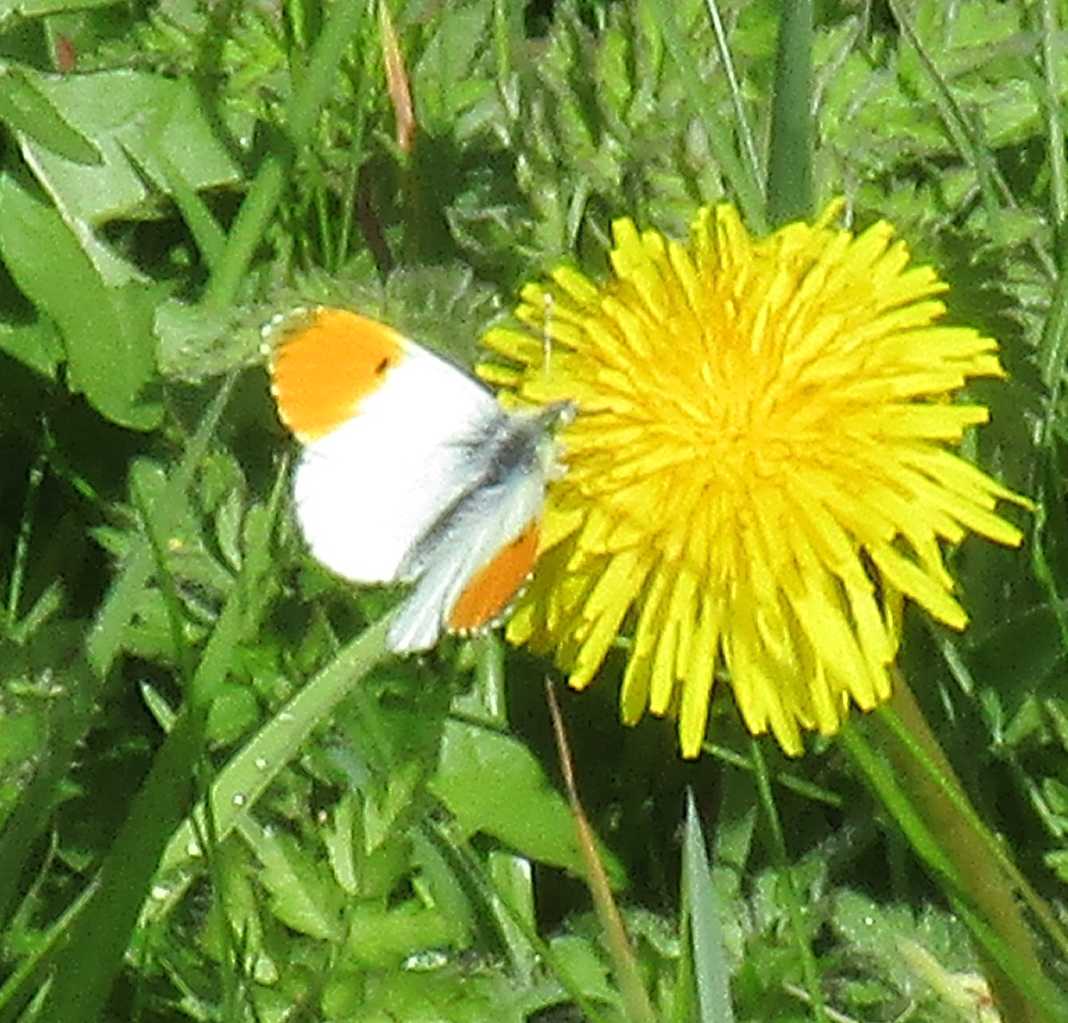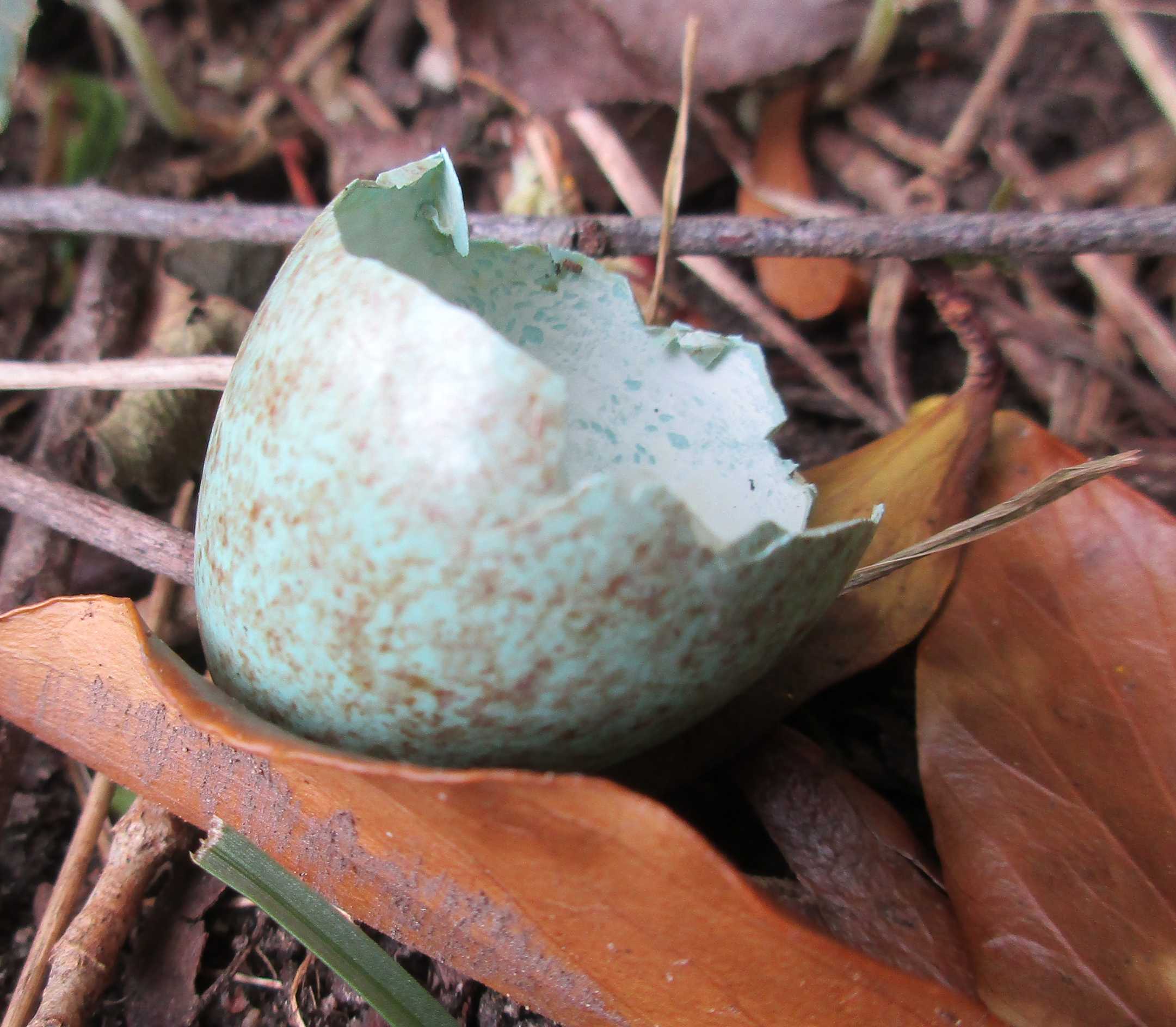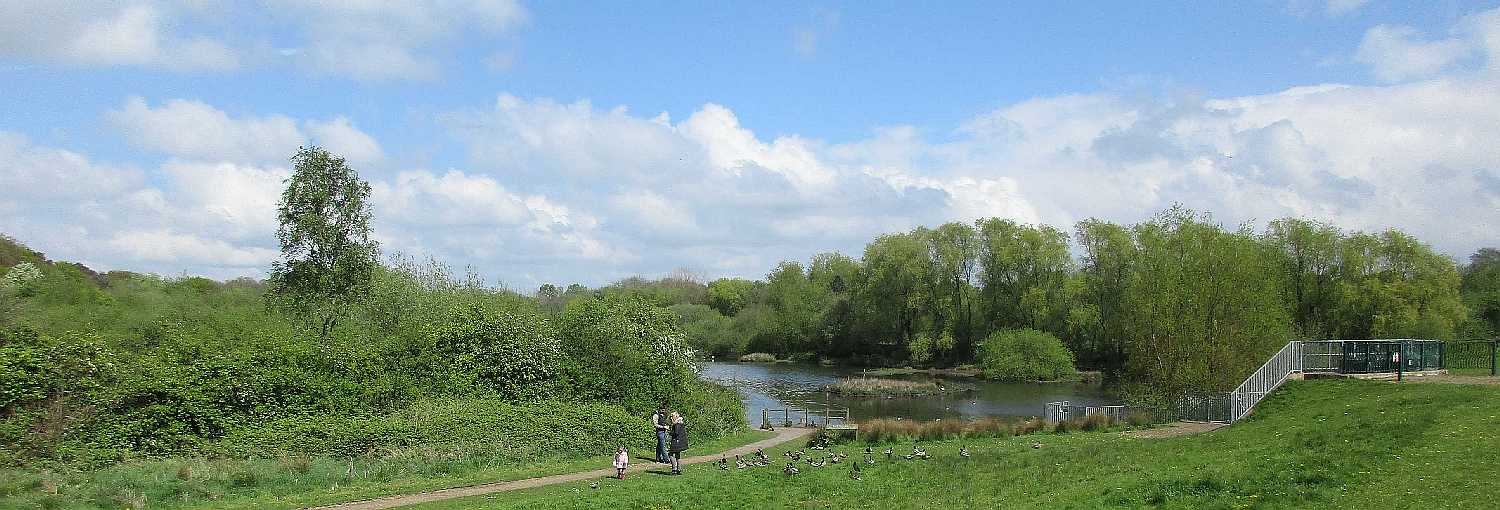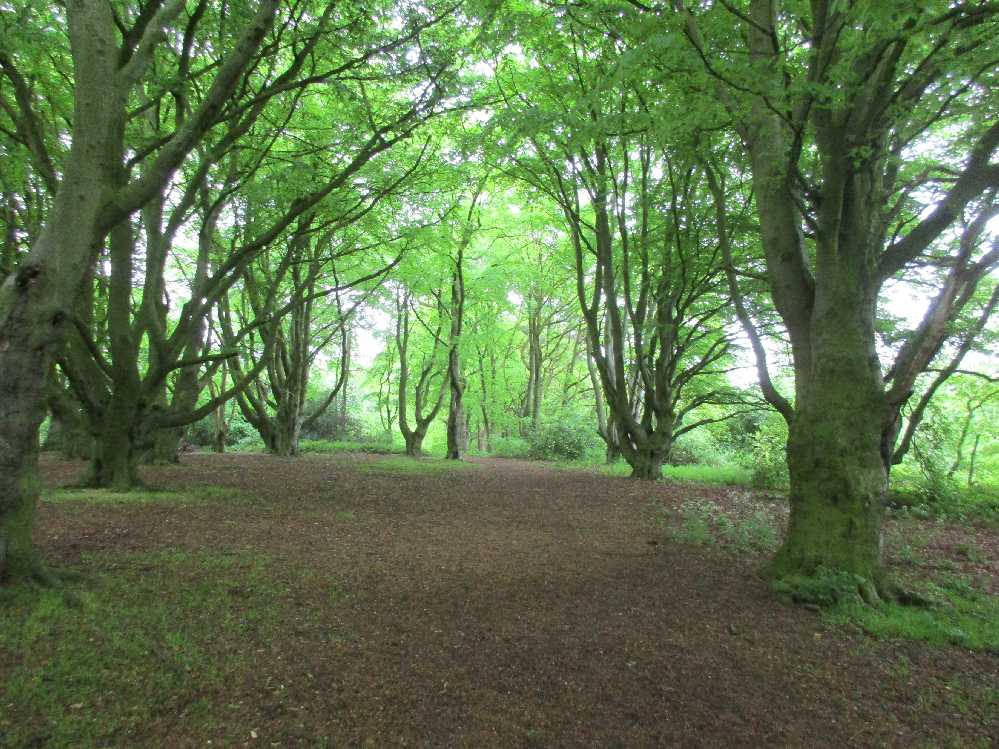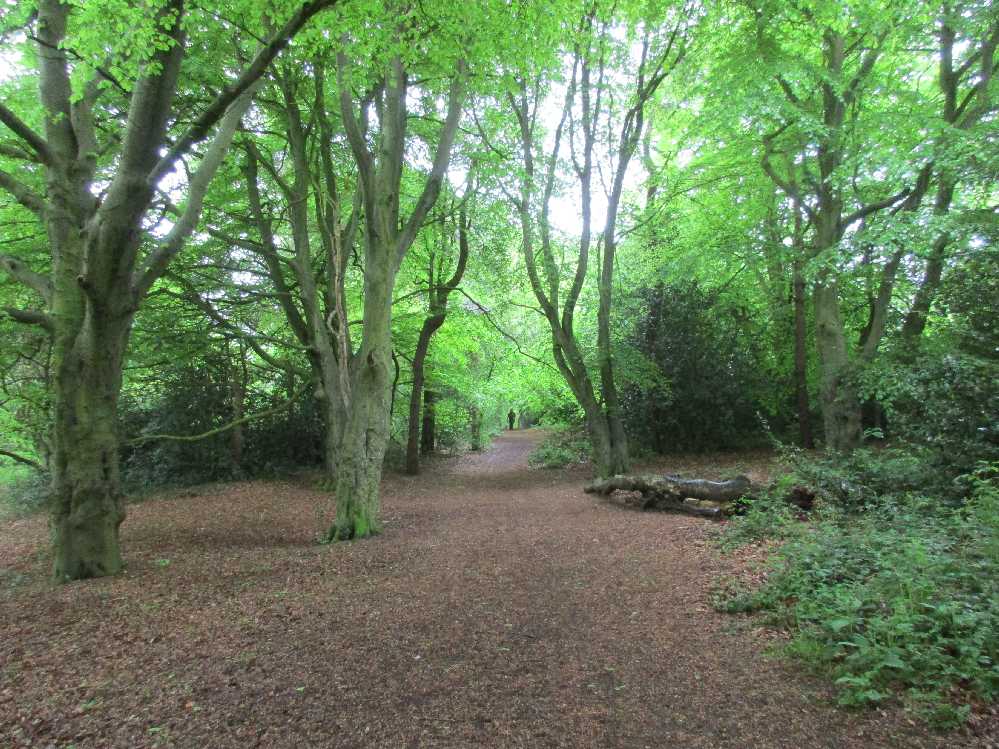
These might be regarded as springtime Nature Reserve cheats! On the left we have the first coloured tree flowers of the year. But they are of a bush called Forsythia, which must count as a garden escape rather than an element of the natural local flora. In the middle we have gorse, also known as furze. That's native alright but as it can be found flowering at any time of year it can't be regarded as a sign of springtime. And there's very little of it in our Reserve. The Council folk in the right-hand picture are doing a spring clean - for the benefit of us visitors rather than to help Nature: unfortunately they're not part of the ecosystem.
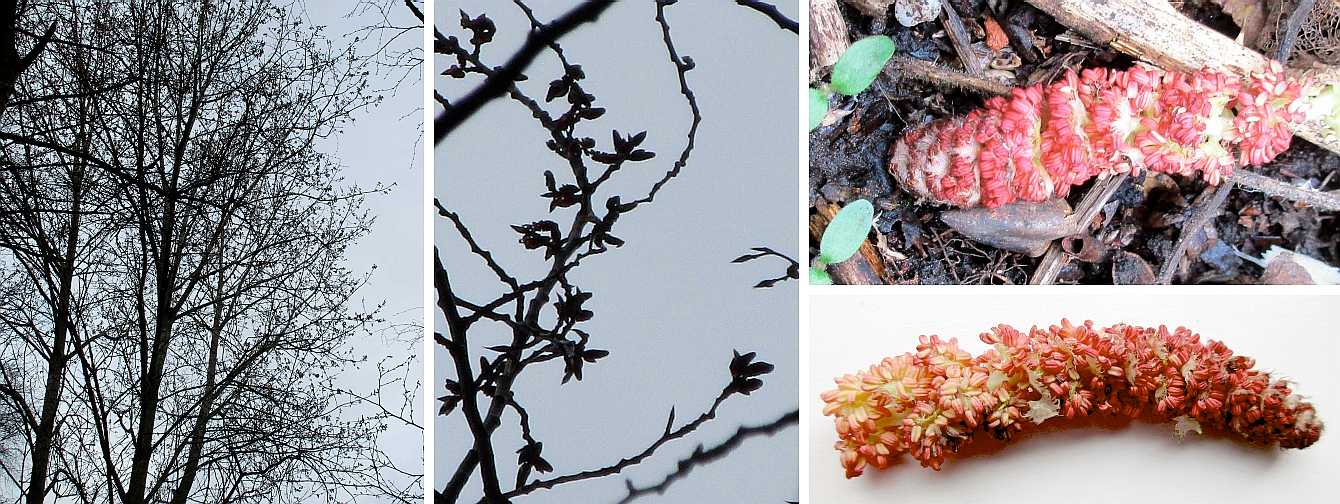
| By the middle of March, in 2017 at least, more leaves appear on a few trees and some shrubs. But on the tall black poplar trees (above) their characteristic red catkins can be made out against the sky: fallen damaged ones can be seen on the ground. These are actually male-only catkins, liberating pollen onto local breezes and longer distance winds. |
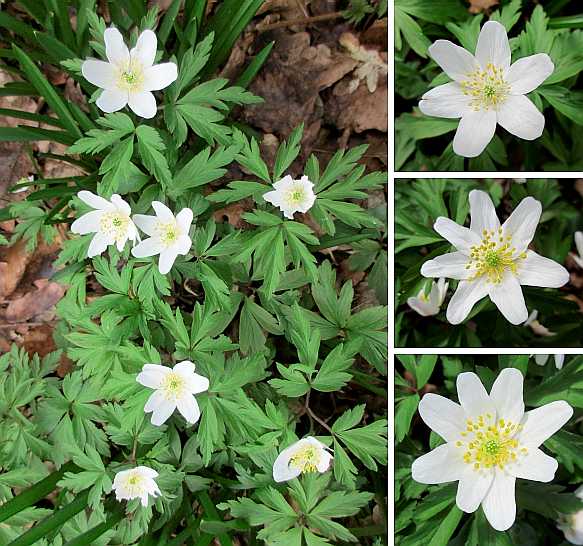 |
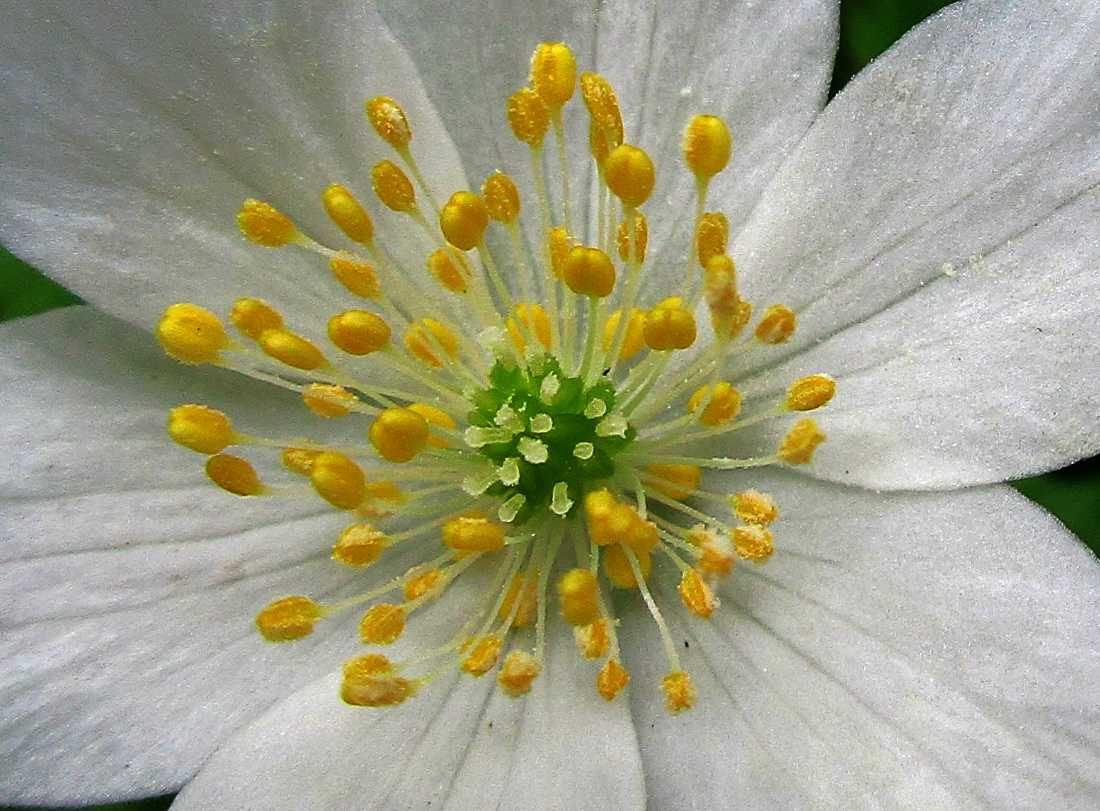 |
| Sharing ground spaces with the developing bluebells - and making sure their glories are displayed ahead of those exhibitionists - are the wood anemones (pronounced almost as wooden enemies). They take the crown as being the first decorative ground flora of the year. As shown, they can have variable numbers of petals. |
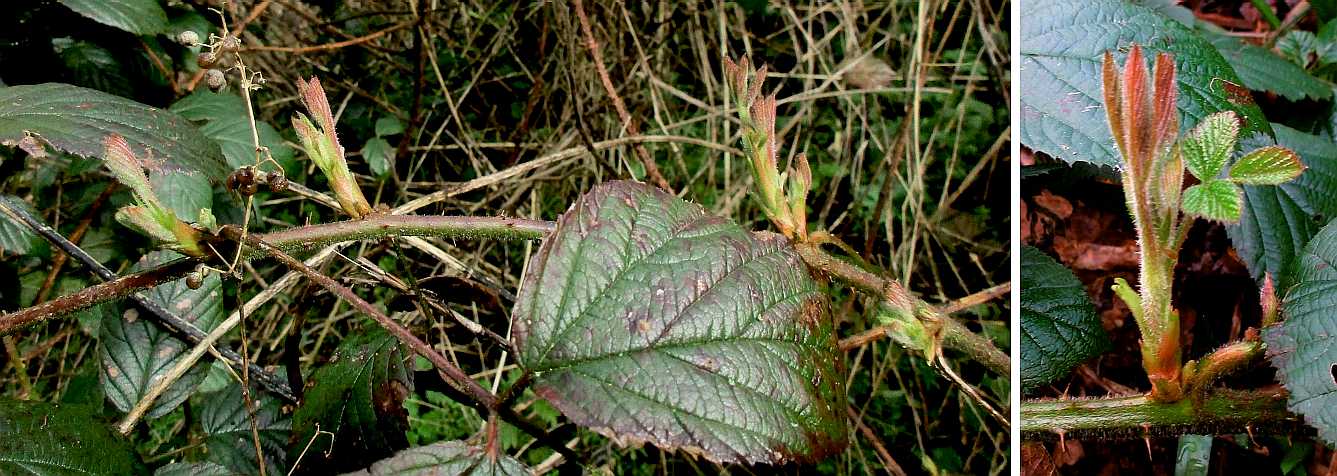 |
Bramble shoots make an early start in their annual attempt to take over the World. This was the third week of March. |
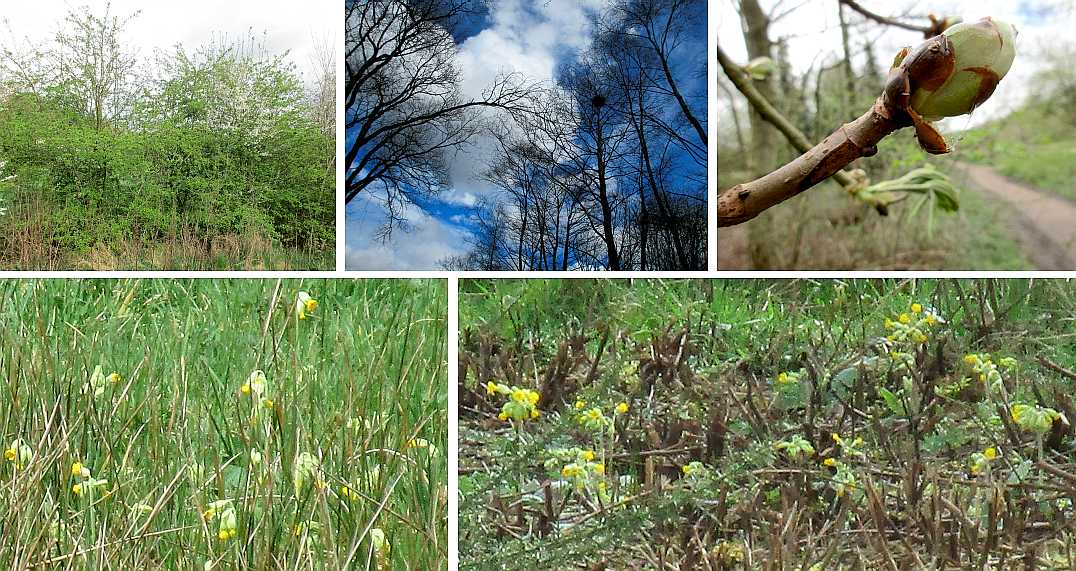
April Fools' Day may mean nothing to Mother Nature but it's a convenient review date. Many of the bushes are well on the way towards their full summer outfits, while their neighbouring forest trees seem to be still in the dead of winter. But bud scales are beginning to litter the paths in places: the 'sticky buds' of the horse chestnut are opening to reveal their green potential.
Away from the trees, the first cowslips are appearing. But they're all well inside the fenced-off conservation areas so they're not very easy to appreciate in detail.

As we get properly into April the range of flowers on the ground increases. This is a selection made in the second week of the month.
Sweet vernal is on the left - commonly the first of the grasses to flower in the spring, possibly to the detriment of hay-fever sufferers since the yellow parts are pollen sacks waiting to start wind distribution. But the name is appropriate since
vernal means
relating to springtime.
Much rarer, the
snake's head fritillary is so named from the mauve pattern supposedly similar to snakeskin. Even rarer is the white companion specimen. Fritillaries don't fit with modern farm practices, so the examples in our conservation area are especially welcome. They're actually a kind of lily.
But don't forget the common forgetmenot-blue
forget-me-not flowers, nor the taller, very pale mauve
lady's smock on the right.
The willows present a united front now, while the horse chestnuts are coming into flower. The oaks also combine leaf emergence with flowering, albeit less ostentatiously. But the big beech trees are still largely bare: only the youngsters have their new leaves in action. But May Day does seem to be the start of the bluebell season proper in many places around the oak woods.

A vital inclusion within 'springtime' is for the next generation to make its appearance. There are enough fenced-off areas within the Reserve to afford quiet isolated facilities for nesting and incubation to take place undisturbed by human visitors. The proud, protective Canada goose parents have seven goslings. Their colleagues followed suite with other broods within days.
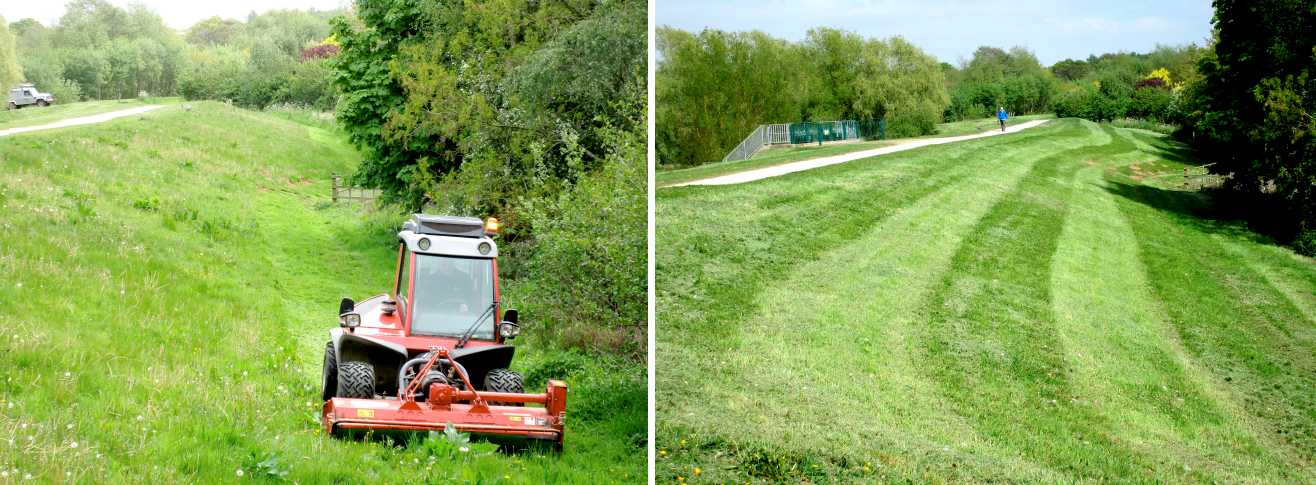
A welcome sign of a forthcoming summer is the smell (difficult to photograph) of mown grass. Whereas most areas of the Reserve are left to Nature, the herb-rich grass on the dam sides is trimmed periodically. As well as looking tidier, the regrowing herbage is favoured by the geese for their grazing.

Some modest clumps of bluebells appeared in several places around the Reserve in the first week in April (2017). The first blue flower to be spotted in the oak woods was a week later. But it was not until the early weeks of May that areas of the oak woods became carpeted in blue.

